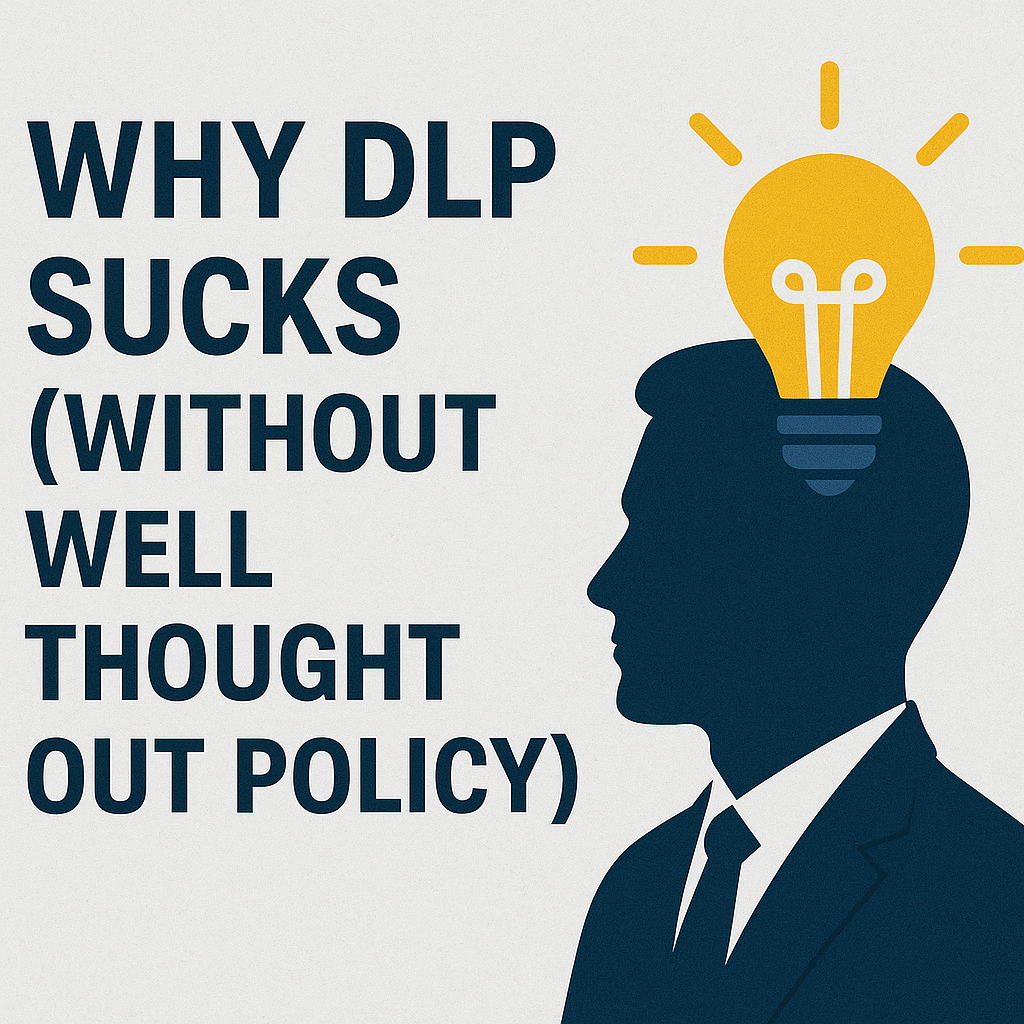
Written by Luke Youle – DLP Team Lead at Gradian
Data Loss Prevention (DLP) tools. On paper, they sound like a knight in shining armour, ready to protect your sensitive data from wandering eyes and malicious intent. You invest in a shiny new DLP solution, expecting instant security and peace of mind. But what happens when that knight is wielding a blunt sword and swinging wildly? That’s when your fancy DLP system starts to feel less like a protector and more like a pain in the… well, everywhere.
The truth is, a DLP solution without a meticulously crafted and consistently enforced policy is about as useful as a chocolate teapot. It’s a costly investment that delivers frustration, hinders productivity, and ultimately fails to achieve its core purpose.
Alert Fatigue: The Boy Who Cried Wolf (Constantly)
Without clear policies defining what constitutes sensitive data and acceptable usage, your DLP system will likely trigger an avalanche of alerts. Every email containing a slightly suspicious phrase, every file with a vaguely sensitive-sounding name, every attempt to copy data to a personal USB drive will set off alarms. Your security team will be drowning in false positives, leading to alert fatigue. Important incidents will get lost in the noise, and eventually, the team will start ignoring alerts altogether – completely defeating the purpose of having a DLP in the first place.
Productivity Paralysis: The Roadblock to Efficiency
Imagine trying to do your job when every other action is flagged as potentially risky. Without granular policies that understand the nuances of different roles and workflows, your DLP can become a major roadblock to productivity. Legitimate business processes might be interrupted, employees might find themselves unable to share necessary information, and innovation can be stifled by overly restrictive rules. This leads to frustration, workarounds that might actually be less secure, and ultimately, resentment towards the very system meant to protect the company.
Compliance Chaos: Missing the Mark Entirely
Many organisations implement DLP to meet regulatory compliance requirements. However, simply having a DLP tool installed doesn’t guarantee compliance. Without policies that specifically map to those regulations (like GDPR, HIPAA, or PCI DSS), your DLP is just a piece of software. It won’t automatically understand what data needs specific protection, who has access, and how it should be handled. This leaves you with a false sense of security and potentially still vulnerable to hefty fines and reputational damage.
It’s Not Set-and-Forget
DLP isn’t a one-time fix. It requires ongoing attention, monitoring, and updates to remain effective. As business needs evolve, so should your DLP policies. This might mean revisiting the classification of sensitive data, updating user access protocols, or modifying incident response plans. Well-thought-out policies ensure that DLP remains relevant and adaptable over time. It helps your team stay proactive in identifying emerging risks and responding to new challenges before they become serious threats.
The Human Factor: Ignoring the People in the Process
A well-defined DLP policy isn’t just about technical configurations; it’s also about people. Without clear communication, training, and understanding of the policies, employees will inevitably stumble. They might unintentionally trigger alerts, find workarounds that compromise security, or simply be confused about what they are and aren’t allowed to do. A policy that isn’t understood and embraced by the users is a policy destined to fail.
In Conclusion: Policy is the Foundation, Not an Afterthought
A DLP solution can be a powerful asset in your security arsenal, preventing costly data breaches and ensuring compliance. However, it’s crucial to remember that the technology is only as effective as the policies that govern it. Investing in a top-tier DLP without investing the time and effort in developing well-thought-out, clearly communicated, and consistently enforced policies is like buying a Formula 1 car and then driving it without any rules or a defined track. You’ll likely end up crashing and burning.
How We Can Help
Don’t let your DLP investment become a source of frustration and ineffectiveness. Prioritise the creation of robust policies that are tailored to your organisation’s specific needs, workflows, and regulatory requirements. Only then can your DLP truly shine as the data protection champion it’s meant to be.
Are you currently refining your own DLP policies? We’d love to hear how you’re approaching it. Simply get in touch with us today and we are happy to provide a free DLP Workshop.
